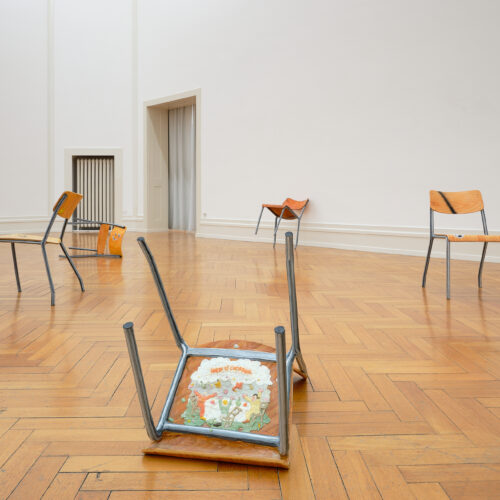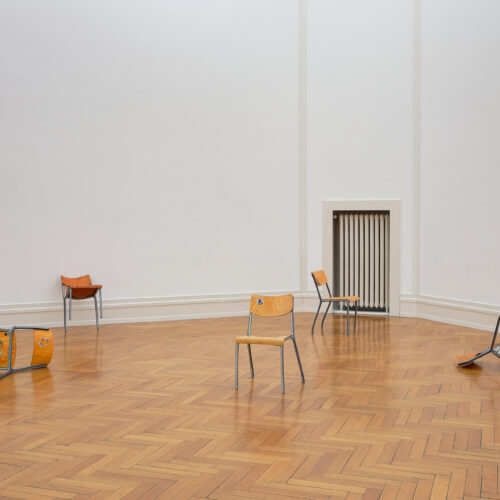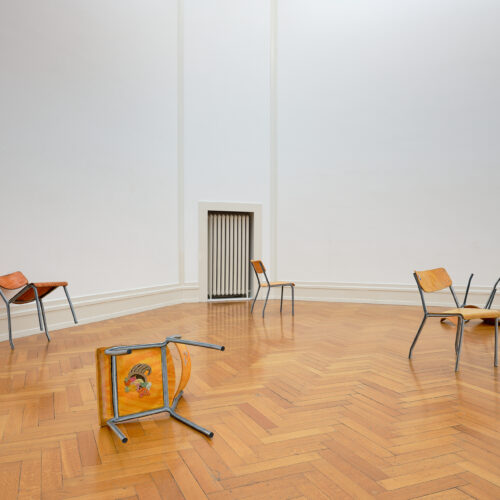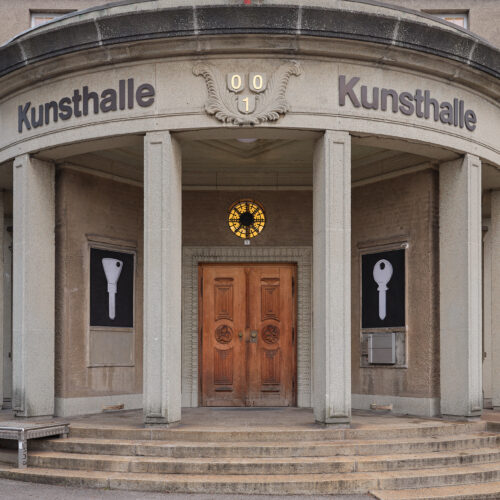Schoolchairs
Images of my series of papermache schoolchairs in the collective show “The locks we build, the keys we hold” at Kunsthalle Bern
15.12.24-19.01.25
“Schoolchairs” is a series of painted papermache casts. I chose these objects because I encountered them in places that had the function of educating me (school, university, military service), and I found them again when I started teaching visual arts in plublic schools in Geneva. It made me realise that they were an important disciplinary tool, because they regulate the relationship between the body and the space, which says a lot about the power structures in the classroom.
I felt a tension in school – due to the numerous issues, like inequality of chances, that are not solved yet – and the school furniture bore its traces: the students would reclaim the chairs and engrave them, put stickers on them, draw on them etc. That inspired me produce these sculptures, which also pushed me to ask myself: what do I want to express, what is my relationship to authority?



